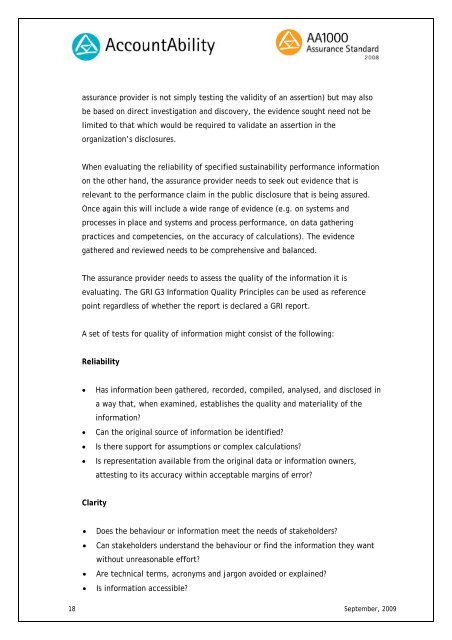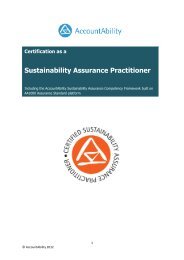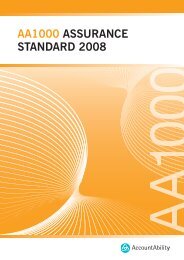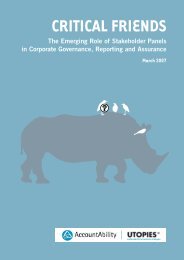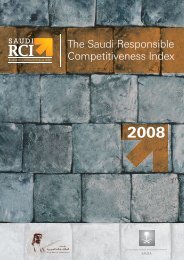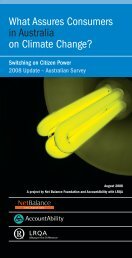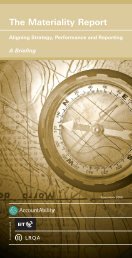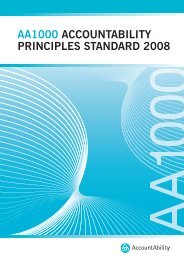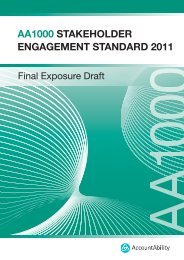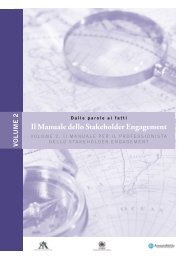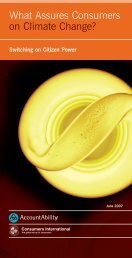Guidance for AA1000AS (2008) Assurance Providers - AccountAbility
Guidance for AA1000AS (2008) Assurance Providers - AccountAbility
Guidance for AA1000AS (2008) Assurance Providers - AccountAbility
Create successful ePaper yourself
Turn your PDF publications into a flip-book with our unique Google optimized e-Paper software.
assurance provider is not simply testing the validity of an assertion) but may alsobe based on direct investigation and discovery, the evidence sought need not belimited to that which would be required to validate an assertion in theorganization’s disclosures.When evaluating the reliability of specified sustainability per<strong>for</strong>mance in<strong>for</strong>mationon the other hand, the assurance provider needs to seek out evidence that isrelevant to the per<strong>for</strong>mance claim in the public disclosure that is being assured.Once again this will include a wide range of evidence (e.g. on systems andprocesses in place and systems and process per<strong>for</strong>mance, on data gatheringpractices and competencies, on the accuracy of calculations). The evidencegathered and reviewed needs to be comprehensive and balanced.The assurance provider needs to assess the quality of the in<strong>for</strong>mation it isevaluating. The GRI G3 In<strong>for</strong>mation Quality Principles can be used as referencepoint regardless of whether the report is declared a GRI report.A set of tests <strong>for</strong> quality of in<strong>for</strong>mation might consist of the following:Reliability• Has in<strong>for</strong>mation been gathered, recorded, compiled, analysed, and disclosed ina way that, when examined, establishes the quality and materiality of thein<strong>for</strong>mation?• Can the original source of in<strong>for</strong>mation be identified?• Is there support <strong>for</strong> assumptions or complex calculations?• Is representation available from the original data or in<strong>for</strong>mation owners,attesting to its accuracy within acceptable margins of error?Clarity• Does the behaviour or in<strong>for</strong>mation meet the needs of stakeholders?• Can stakeholders understand the behaviour or find the in<strong>for</strong>mation they wantwithout unreasonable ef<strong>for</strong>t?• Are technical terms, acronyms and jargon avoided or explained?• Is in<strong>for</strong>mation accessible?18 September, 2009


